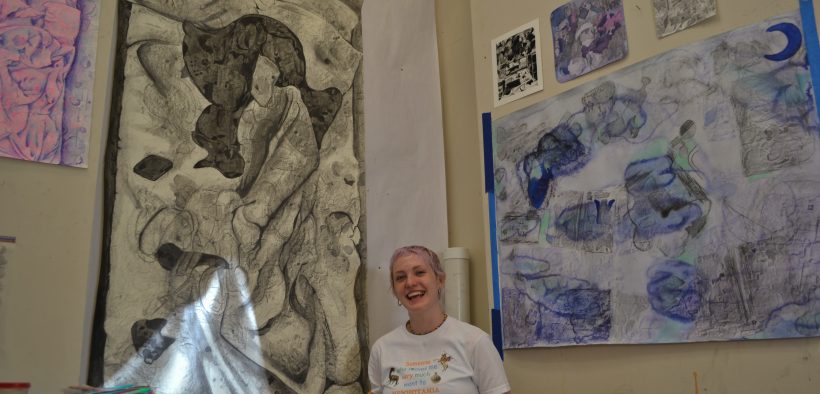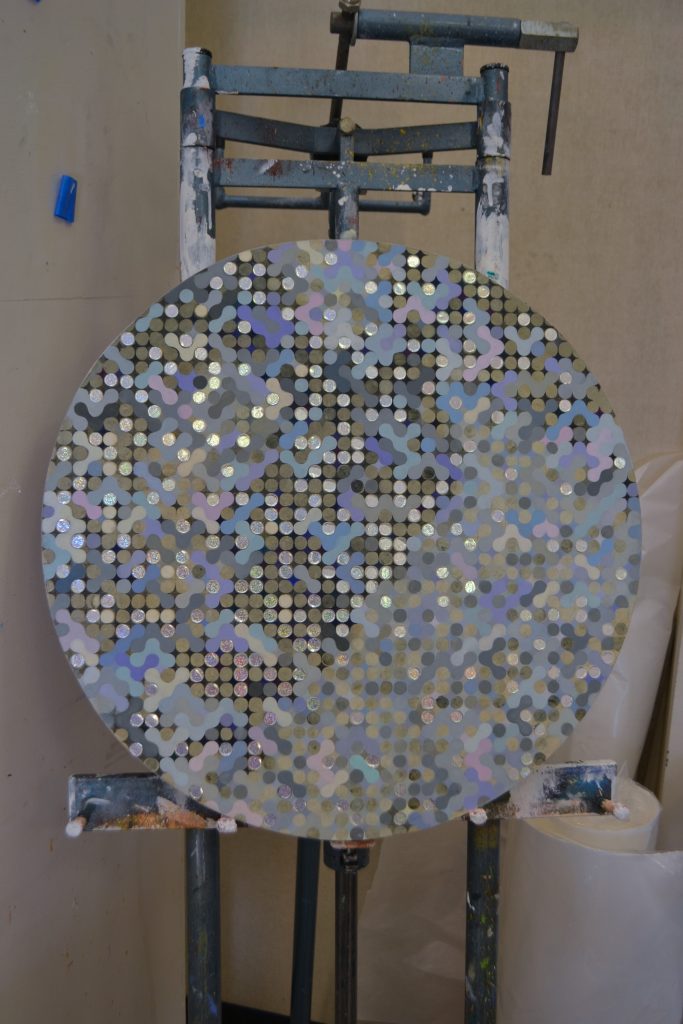Paisley’s Studio Art Capstone: I’M MATTER (REALITY)
Share

How do you make your imprint in the spaces you take up? What visual cues do you leave in your wake? Paisley Humpert, from Victoria, Tx, plays with these questions in the process of taking rubbings from stickers and transferring them onto a new plane of space. For Paisley’s Studio Art capstone they looked at identity performance and how it presents itself under capitalism. Expressing the idea of consumptive performances, Paisley creates whimsical and dreamy mixed-media artworks to illustrate the connection between our internal world with our outward expression of it. We create spaces around ourselves through the products we fashion and use, and for Paisley, the use of stickers to stylize laptops, notebooks, and water bottles particularly interested them in how we perform with and in global capitalism.
In the making of this, Paisley used graphite and pastels to take rubbings of surfaces that have stickers on them and built up the rubbings from there, creating spaces that resemble beds. The process took over a year in total as Paisley pushed and pulled the shapes to visually represent how our experience impresses images in our mind. The process started with an assignment in printmaking about the powerful ability of the mind to conjure space. From there, they worked with crayola to abstract drawings, slowly finding meaning from the spaces they created, an alive and moving process that arose through trial and error. Especially with arthritis that requires more time during flare ups, Paisley’s art has hours of passion and unfolding insight in it. Paisley, when talking about the additional obstacle of making art with arthritis, said with confidence “this is the thing I like so I’ll do it anyways,” and that brought me joy to hear.

Paisley’s only painting piece, with tile pieces carefully placed in, sits in the studio glowing and glittering in its own space.
Photo by Sarah Parks
Paisley intends to sell their work in the future. Being able to sell their work (especially in the form of stickers) for others to use as a form of expressing their own internal world only adds another deeply profound layer to the relationship to the work as a whole. What meaning will the art take on once Paisley’s study of other people’s performances become a performance for sale itself? Find out in the future by keeping tabs on their website: paisleyblair.com
Talking with Paisley about the capstone’s core ideas had me reconsidering my own relationship with the small stories I tell others with the stickers I choose to use. I remembered my long lost water bottle with over a dozen of my favorite stickers on it, and considered how dense that one object was in storytelling. I was bringing my own internal space of interests and experiences around me to public spheres, I suppose not wanting a reaction but wanting it to be seen by others other than myself. How much money do I spend on my own consumptive performance? When is that performance authentic when it is deeply tied to the global system of capitalism? I’d like to think yes, since authenticity has to be found in such a system, which is exactly what Paisley does in this study. Stickers are an intriguing example of products that – as Paisley wrote so well – are “intended to instigate connection but destined to be discarded.” Stickers seem like a snippet of our imaginations taking form and asking others, “do you take interest in me and the colorful spaces within my mind?” And if no one ever answers your stickers’ questions, Paisley will.
